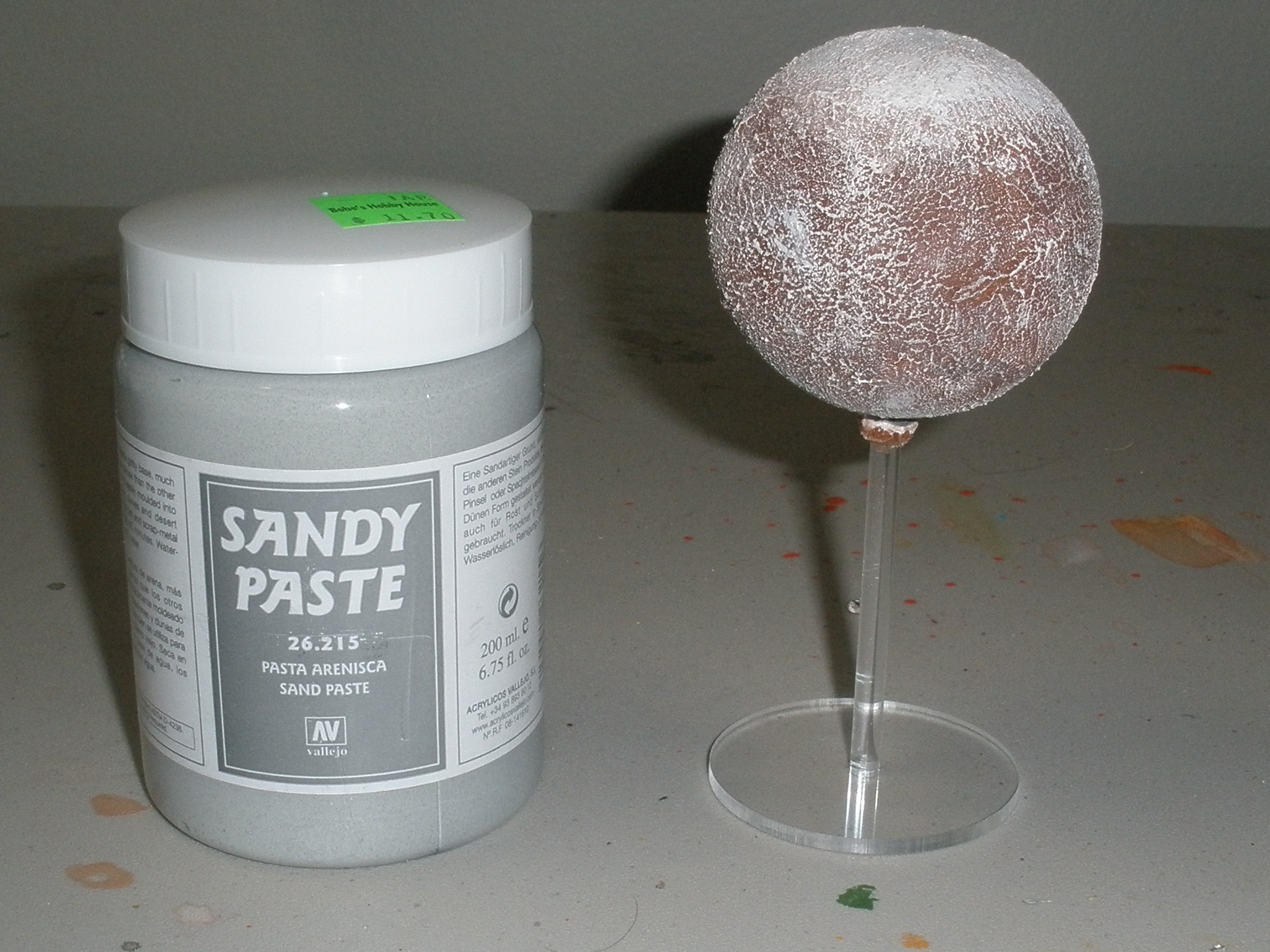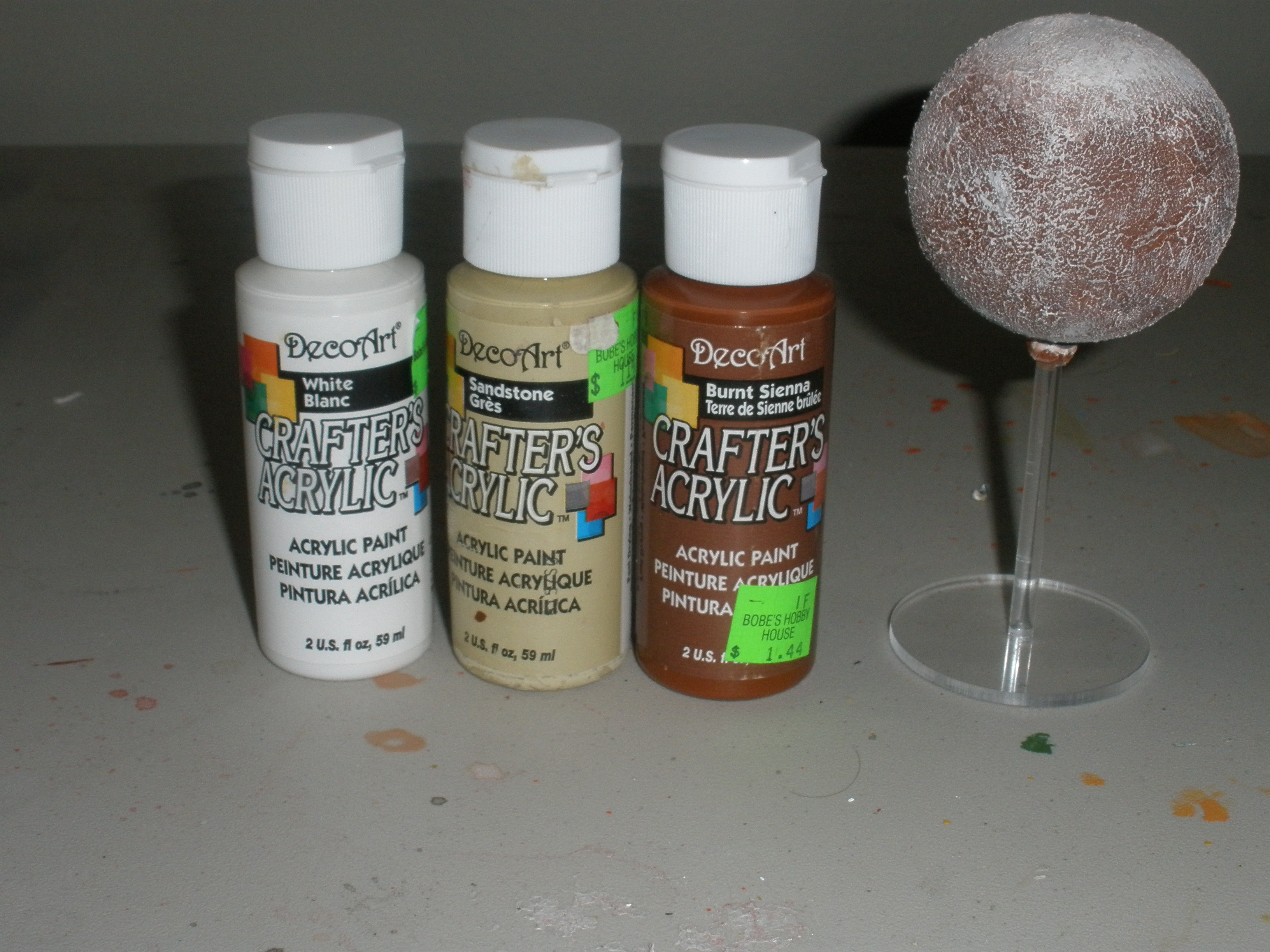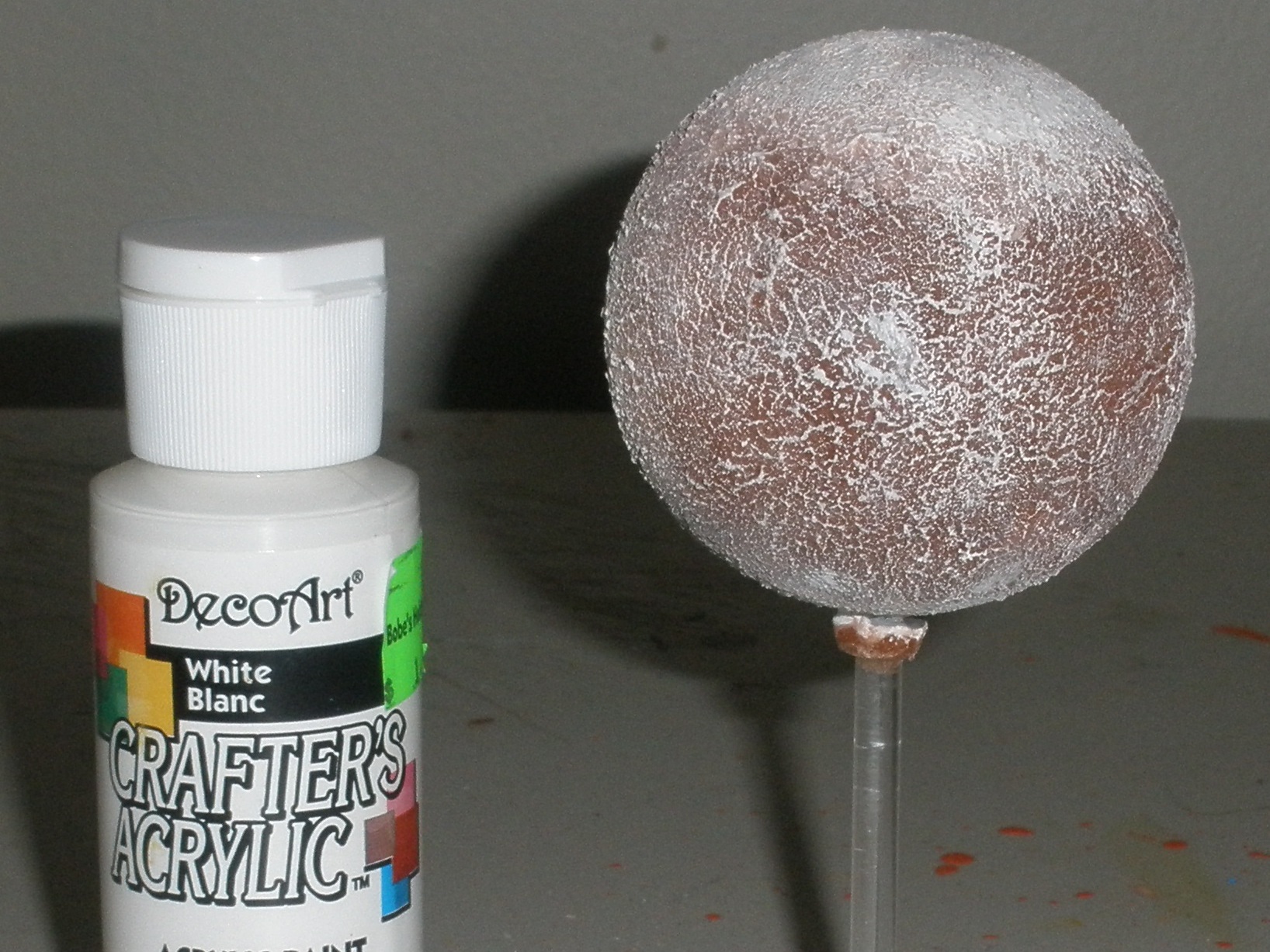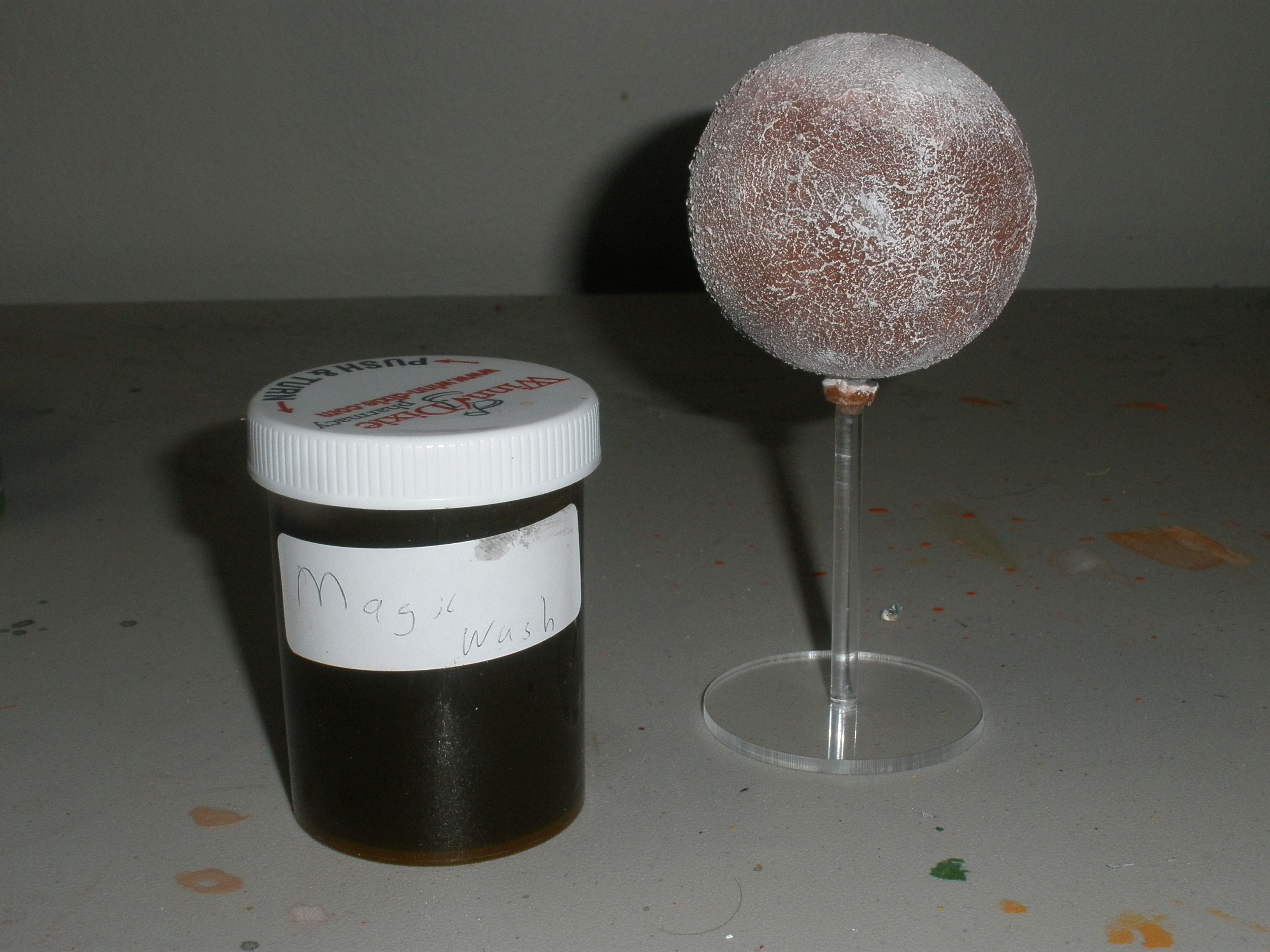I run a site called CorSec Engineering which offers kits for making planets for tabletop gaming or science fair projects. They can be found here. This planet was painted in less than 30 minutes and is really easy to do.
Theme:
This planet has an abundance of water but it is a little cold and most of it is frozen. Very little vegetation grows and it would not be a very pleasant place to visit.
What you need:
Sandy Paste by Vallejo
Burnt Sienna, White, and Tan craft acrylic paints.
Magic Wash
Epoxy
Acrylic Glue (ProWeld)
A companion video to help illustrate the process is here.











